The 1887 Morgan Silver Dollar’s value varies significantly based on condition, mint mark, and errors. Circulated coins are worth $50-$90, while uncirculated examples range from $195 (MS-63) to over $1,000 for higher grades (MS-65+). The “O” mint mark indicates New Orleans production, with 11,550,000 minted. Rare varieties like the 1887/6-O overdate and “Hot Lips” doubled die obverse command premium prices, potentially reaching thousands of dollars. The “S” (San Francisco) and no mint mark (Philadelphia) versions also exist with varying values. Grade is the most critical factor affecting worth. For precise valuations, consult NGC, PCGS price guides, or check recent auction results from Heritage Auctions and Stack’s Bowers.
The 1887 Morgan Silver Dollar represents one of the most fascinating years in the Morgan Dollar series, with production across three mints creating distinct collecting opportunities. Whether you’ve inherited a worn coin from your grandfather or discovered a pristine specimen at an estate sale, understanding the precise value differences between mint marks and rare varieties could mean the difference between $50 and several thousand dollars. With nearly 30 million coins struck across Philadelphia, New Orleans, and San Francisco, finding the right variety matters tremendously.
Understanding the Three 1887 Mint Marks and Their Production Numbers
The 1887 Morgan Dollar production tells a story of booming silver coinage during America’s late 19th century. Philadelphia led production with 20,290,000 coins bearing no mint mark, while the New Orleans facility struck 11,550,000 pieces marked with an “O” on the reverse below the eagle’s tail feathers. San Francisco contributed the smallest quantity at 1,771,000 coins marked “S” in the same location.
These mintage figures directly impact today’s market values, though not always in predictable ways. The San Francisco issue, despite its lower production numbers, doesn’t always command the highest prices in circulated grades. Instead, the survival rate of high-grade uncirculated specimens creates the real value differentiation. Many 1887-S coins entered circulation in the Western United States, where they received heavy use in commercial transactions, making pristine examples genuinely scarce.
The Philadelphia coins without mint marks saw extensive Treasury vault storage, resulting in substantial quantities surviving in uncirculated condition. This abundance of well-preserved examples keeps prices moderate in lower mint state grades, though exceptional quality still commands premium pricing.
What Circulated 1887 Morgan Dollars Are Worth by Grade
For coins that show wear from actual use, values remain accessible to most collectors. An 1887 Morgan Dollar graded Good-4, where the rim details merge with Liberty’s head and only basic design elements remain visible, typically sells for $45-$55 depending on mint mark. Fine-12 examples, displaying moderate wear with clear but flat hair details above Liberty’s forehead, generally trade between $50-$65.
Very Fine-20 specimens, where about half the original hair detail remains visible and the cotton leaves show moderate wear, usually fetch $55-$70. The About Uncirculated-50 grade, showing slight friction on the high points but retaining nearly full mint luster, commands $65-$90 for most varieties.
The 1887-O typically sits at the lower end of these ranges, with circulated examples averaging $50-$75. The 1887-S commands slight premiums in worn condition, generally adding $5-$10 to comparable grades due to its lower mintage. Philadelphia coins without mint marks fall between these two, though varieties and die characteristics can override these baseline values significantly.
Uncirculated Grade Values: Where Serious Money Begins
The transition from circulated to uncirculated condition creates dramatic value increases. An 1887 Morgan Dollar graded MS-60, showing full mint luster but with numerous contact marks from bag handling, starts around $85-$110 depending on mint mark. MS-63, the entry point for quality uncirculated coins with moderate marks and good eye appeal, typically ranges from $125-$195.
The real value acceleration occurs at MS-65 and higher. Here’s where condition census coins and exceptional specimens command serious collector attention:
| Grade | 1887 (No Mark) | 1887-O | 1887-S |
|---|---|---|---|
| MS-63 | $125-$165 | $175-$225 | $185-$240 |
| MS-64 | $185-$285 | $325-$475 | $375-$550 |
| MS-65 | $425-$750 | $850-$1,400 | $1,200-$2,100 |
| MS-66 | $1,200-$2,500 | $3,500-$6,500 | $5,000-$9,500 |
| MS-67 | $8,000-$15,000 | $18,000-$35,000 | $25,000-$50,000 |
These figures reflect auction results from Heritage Auctions and Stack’s Bowers sales throughout 2022-2024. The 1887-S in gem uncirculated condition represents genuine rarity, with perhaps fewer than 200 specimens grading MS-65 or higher certified by PCGS and NGC combined.
An exceptional MS-67 1887-S sold for $47,000 at a Heritage Auctions sale in January 2023, while an MS-67+ example brought $58,750 in August 2023. These prices reflect the extreme difficulty of finding San Francisco issues with minimal bag marks and strong original luster.
The 1887/6-O Overdate: A Major Variety Worth Hunting
Among 1887 Morgan Dollars, the 1887/6-O overdate variety stands as one of the series’ most significant collectible variations. Examination under magnification reveals traces of an underlying “6” beneath the final “7” in the date, created when the New Orleans Mint reused 1886-dated working dies by overpunching the final digit.
This variety remained relatively obscure until the 1960s when numismatist Leroy Van Allen documented it systematically. Today, it ranks among the top 20 most valuable Morgan Dollar varieties in high grades.
Values for authenticated 1887/6-O pieces start around $150-$200 in Very Fine condition, rising to $350-$500 in About Uncirculated grades. Uncirculated examples command substantial premiums: MS-63 specimens typically sell for $800-$1,200, while MS-64 examples range from $2,000-$3,500. An MS-65 1887/6-O sold for $6,600 at Stack’s Bowers in March 2023, and MS-66 specimens have exceeded $15,000 at auction.
The key diagnostic for this variety involves examining the upper left portion of the final digit in the date. Under 10x magnification, you’ll see remnants of the curved upper portion of a “6” protruding above and to the left of the “7’s” upper serif. Not all 1887-O coins show this feature—only those struck from specific die pairs exhibit the overdate.
Hot Lips and Other Doubled Die Varieties
The 1887 “Hot Lips” variety describes a dramatic doubled die obverse affecting Liberty’s mouth on certain Philadelphia and San Francisco coins. This doubling creates the appearance of fuller, more pronounced lips, hence the colorful nickname. The variety results from hub doubling during die production, creating a distinct secondary impression offset from the primary design.
Authentication requires careful examination of Liberty’s upper lip, where the doubling appears most dramatically. Lesser doubling also shows in the nose profile and chin contours. Values for confirmed Hot Lips specimens begin around $200-$350 in circulated grades, reaching $600-$1,200 in MS-63, and $2,500-$5,000 in MS-65.
Other notable 1887 varieties include several die crack errors, particularly on New Orleans issues where die maintenance sometimes lagged behind Philadelphia standards. A significant die crack variety shows a raised line extending from the rim through several stars and into Liberty’s hair. While not as valuable as the overdate or Hot Lips varieties, these pieces command $100-$300 premiums in uncirculated grades.
The 1887 VAM-12 “Doubled Date” from Philadelphia shows clear doubling in all four date digits when viewed under magnification. This variety trades for $150-$250 in circulated condition and $400-$800 in lower mint state grades. High-grade MS-65 examples have sold for $1,800-$2,800 at major auctions.
Spotting Valuable Errors: Mint Mistakes Worth Thousands
Beyond intentional variety errors, production mistakes create additional value opportunities. Off-center strikes, where the planchet wasn’t properly centered in the collar during striking, occur occasionally. An 1887 Morgan Dollar struck 5% off-center with full date visible typically sells for $500-$1,200, while 10-15% off-center examples with complete date command $1,500-$3,500.
Clashed die errors, where obverse and reverse dies struck together without a planchet between them, create mirror images of opposite design elements. An 1887-O with strong clash marks showing wing feather impressions in the obverse field sold for $850 in MS-62 grade at Heritage Auctions in November 2023.
Lamination errors, where the silver planchet’s metal separated in layers, create dramatic visual defects. Depending on size and location, these can add $200-$800 to standard values for uncirculated coins. A spectacular 1887 lamination error covering 30% of Liberty’s profile sold for $2,400 in MS-64 at a Stack’s Bowers auction.
Struck-through errors occur when foreign material lands on the die or planchet during striking. Cloth, wire fragments, or grease can create distinctive patterns. An 1887-S struck through a thread, leaving a raised line across the entire obverse, brought $1,650 in AU-58 grade.
Authentication: Protecting Yourself From Counterfeits and Alterations
The substantial value differences between common and rare varieties has spawned a cottage industry in counterfeiting and fraudulent alteration. Chinese-manufactured fake Morgan Dollars have flooded the market since the 2010s, with 1887 dates among the most frequently counterfeited.
Genuine 1887 Morgan Dollars weigh 26.73 grams with a tolerance of approximately 0.2 grams. Counterfeits often weigh 25-27 grams but rarely hit the exact specification. The coin’s diameter measures 38.1mm, and thickness runs 2.4mm at the rim. A digital caliper and precision scale provide essential first-line authentication tools.
Ring testing—gently balancing the coin on a fingertip and tapping the edge with another coin—should produce a clear, sustained tone lasting 3-5 seconds. Counterfeits typically produce a dull thud or inconsistent tone. This test works best with uncirculated coins, as worn specimens may not ring clearly regardless of authenticity.
The reeded edge should show approximately 177-185 individual reeds around the circumference. Counterfeits often show incorrect reed counts or irregular spacing. Examining the reeding under magnification reveals whether it was cut mechanically after casting (irregular depth and spacing) versus applied during striking (uniform depth and sharp definition).
For varieties like the 1887/6-O, submitted coins to PCGS or NGC for professional authentication costs $20-$35 per coin but provides essential protection when investing hundreds or thousands of dollars. Third-party grading services also detect mint mark additions, where unscrupulous sellers add fake “O” or “S” mint marks to more common Philadelphia coins.
Investment Potential: Which 1887 Morgans Make Sense
From an investment perspective, the 1887 Morgan Dollar market segment shows consistent appreciation in high grades over the past decade. PCGS Price Guide data indicates MS-65 1887-O coins appreciated approximately 85% between 2014 and 2024, from roughly $460 to $850. The 1887-S in MS-65 grew from $725 to $1,200 during the same period, representing 65% growth.
For collectors with budgets under $500, focusing on circulated to lower uncirculated grades of the scarcer 1887-S provides solid value. These coins remain affordable while offering exposure to the lowest-mintage variety of the year. An MS-62 1887-S typically costs $150-$220, providing an attractive entry point with reasonable appreciation potential.
Mid-range collectors with $1,000-$3,000 budgets should consider MS-64 examples of either the 1887-O or 1887-S, or pursue the 1887/6-O overdate in MS-63. These pieces occupy the sweet spot where quality meets relative affordability before prices escalate dramatically at gem grades.
Advanced collectors and investors operating above $5,000 might target MS-66 examples of any variety, particularly the 1887-S, or pursue MS-65 examples of the 1887/6-O overdate. Population reports from PCGS and NGC show these high-grade rarities remain genuinely scarce, with limited availability supporting sustained price growth.
Where to Buy and Sell for Maximum Value
Acquiring 1887 Morgan Dollars through reputable dealers ensures authenticity and fair pricing. Major online platforms like APMEX, JM Bullion, and Heritage Auctions maintain extensive inventories with transparent pricing. Heritage Auctions’ archival search function lets you research actual realized prices for comparable coins, providing essential market intelligence before purchasing.
Local coin shops offer hands-on inspection advantages but may carry limited inventory of specific varieties. Building relationships with shop owners often yields first-look opportunities when interesting pieces arrive. Don’t hesitate to request time for careful examination under magnification before purchasing.
When selling, understanding your coin’s precise variety and grade determines whether you’ll receive fair value. Having your coin professionally graded by PCGS or NGC before selling adds $20-$60 in costs but typically increases realized prices by 15-30% compared to raw coins. Buyers pay premiums for third-party authentication certainty.
Auction venues like Heritage, Stack’s Bowers, and Great Collections reach the broadest collector audiences, maximizing competitive bidding for scarce varieties and high-grade specimens. Auction houses typically charge 10-20% seller fees but deliver stronger prices than dealer direct purchases for rare material. An 1887-S in MS-65, for instance, might bring $1,200-$1,400 at auction versus a dealer direct purchase offer of $900-$1,000.
Building Your 1887 Morgan Dollar Collection Today
Start by acquiring a basic circulated example of each mint mark to understand the series fundamentals. This three-coin set costs approximately $175-$250 and provides the foundation for appreciating quality differences as you progress. Handle these coins frequently, examining details under magnification to train your eye for variety identification and grade assessment.
Next, upgrade one position to uncirculated condition, preferably MS-63 or better. This experience demonstrates the dramatic visual difference between circulated and mint state coins. An MS-63 1887-O costing $175-$225 makes an excellent educational investment while maintaining reasonable affordability.
As budget permits, pursue one significant variety—either the 1887/6-O overdate or a Hot Lips specimen. These varieties transform collecting from simple date accumulation into numismatic detective work, adding engagement and satisfaction beyond mere acquisition. Set a budget ceiling before hunting varieties, as the pursuit can become addictive once you experience the thrill of discovery.
Consider joining the Morgan Dollar Collectors Association or participating in online forums like CoinTalk or the PCGS forums. Experienced collectors readily share identification tips, variety diagnostics, and market insights that accelerate your learning curve dramatically. The knowledge gained from community participation often proves more valuable than formal price guides.
You may be interested:
- 1859 Indian Head Penny Coin Value Complete Errors List And No Mint Mark Worth Guide For Collectors
- 1911 V Nickel Coin Value Guide Complete Errors List And No Mint Mark Worth Today
- 1902 Dime Coin Value Complete Errors List With O S And No Mint Mark Worth Guide
- 1788 Quarter Coin Value Complete Guide Errors List And D S P Mint Mark Worth Revealed
- 1776 To 1976 Bicentennial Half Dollar Coin Value Complete Errors List And What Your D S And No Mint Mark Coins Are Actually Worth
- 1990 Penny Coin Value Errors List How D S And No Mint Mark Pennies Are Worth Thousands Of Dollars

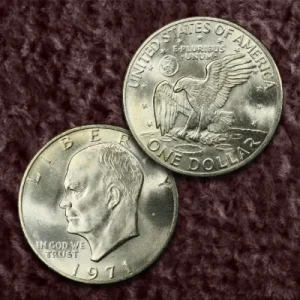
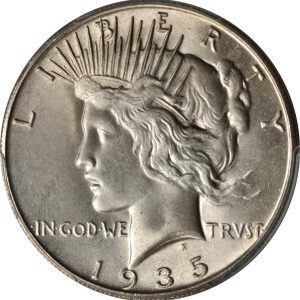
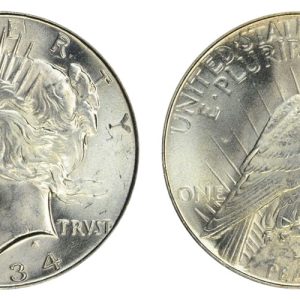
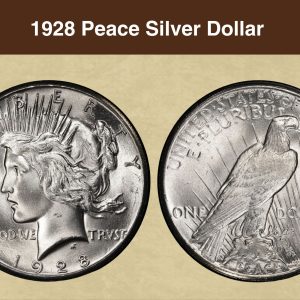
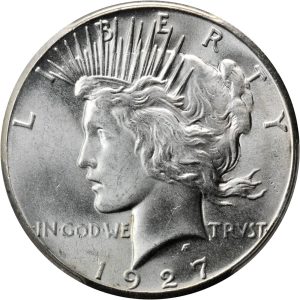
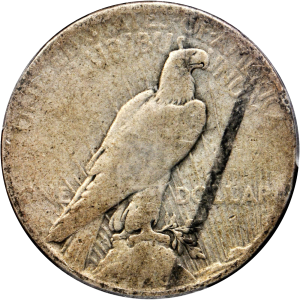
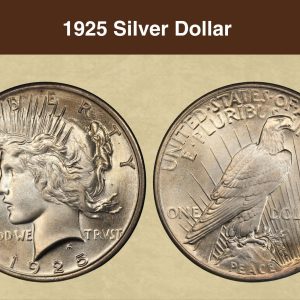
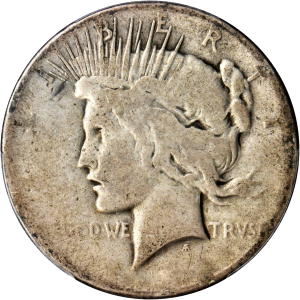
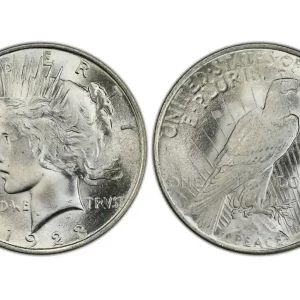
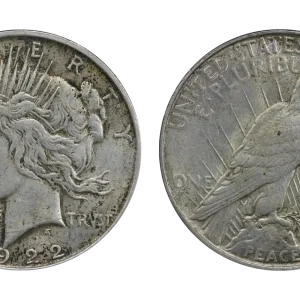
How much is a 1887 O’Morgan dollar worth?
An 1887-O Morgan Silver Dollar’s value ranges from around $50 for circulated condition coins to several hundred or even thousands of dollars for uncirculated coins, depending on the exact grade and whether it has any rare varieties or errors. For example, a circulated example is worth about $50–$90, while a high-grade MS65 coin could be worth over $200. Specialized varieties like the 1887/6-O or 1887 “Hot Lips”, and high mint-state grades, can significantly increase the value.
What makes a 1887 silver dollar rare?
An 1887 silver dollar isn’t inherently rare, as the Philadelphia mint alone produced over 20 million coins. However, certain factors can make a specific 1887 Morgan Silver Dollar valuable and potentially rare, including its mint mark (with ‘S’ and ‘O’ mints generally being more desirable than no mint mark), its condition (higher grades like Mint State 67 or above are much rarer and more valuable), and the presence of specific mint errors or varieties such as a “7 over 6” overdate or a double …
What are the different mint marks for 1887 dollars?
The mint mark on an 1887 Morgan Silver Dollar (e.g., “O” for New Orleans, “S” for San Francisco, or no mint mark for Philadelphia ) significantly affects its value. Coins with the “S” mint mark are generally more valuable, followed by “O” and then Philadelphia issues, with variations depending on condition and rarity.
What are the rare errors on Morgan silver dollars?
Some of the most sought-after VAM varieties include the 1878-P 7/8 Tail Feathers, the 1879-P Reverse of 1878, and the 1887-P Doubled Ear. Clashed Dies : Clashed die errors occur when the obverse and reverse dies strike each other without a planchet in between, leaving impressions from one die on the other.